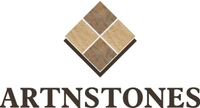Grey Slate Butuching
Product details
"Grey Slate Butchering Stone Cladding" likely refers to a type of wall cladding made from grey slate stone and featuring a "butchering" or rough-hewn finish. Here's a detailed breakdown:
Grey Slate:
- Material: Slate is a fine-grained metamorphic rock known for its durability and distinctive layered appearance.
- Color: Grey slate typically has a neutral grey color, which can vary slightly in tone and texture.
- Texture: Slate is naturally textured, often featuring uneven surfaces and irregular edges.
Butchering Finish:
- Description: The term "butchering" likely refers to a rough or rustic finish applied to the slate, giving it a rugged, handcrafted appearance.
- Characteristics: This finish may involve irregular shaping, chiseling, or splitting of the stone to create a textured surface with varied depths and angles.
Stone Cladding:
- Purpose: Stone cladding serves both functional and aesthetic purposes, providing protection for the underlying structure while enhancing the visual appeal of the space.
- Installation: Slate cladding is typically installed onto walls using adhesives and fasteners, with careful attention to alignment and spacing.
- Design Options: Various design options are possible, including stacked stone, random patterns, or uniform rows, depending on the desired aesthetic.
Benefits:
- Natural Beauty: Grey slate offers a timeless and sophisticated appearance with its unique color and texture.
- Durability: Slate is a durable material that can withstand the elements, making it suitable for both indoor and outdoor applications.
- Low Maintenance: Slate cladding requires minimal maintenance and is resistant to staining, scratching, and fading.
- Versatility: Slate cladding complements a wide range of architectural styles, from traditional to contemporary.
Maintenance:
- Cleaning: Regular cleaning with a mild detergent and water helps maintain the appearance of the slate cladding.
- Sealing: Sealing the slate may be recommended to enhance its natural color and protect it from moisture penetration.
- Inspection: Periodic inspection allows for early detection of any loose or damaged stones, which can be repaired or replaced as needed.
Design Considerations:
- Color Contrast: Grey slate pairs well with a variety of colors, including white, black, and earth tones.
- Texture Variation: Mixing different sizes and shapes of slate stones can create visual interest and depth.
- Lighting: Proper lighting can highlight the texture and natural beauty of the slate cladding.
















